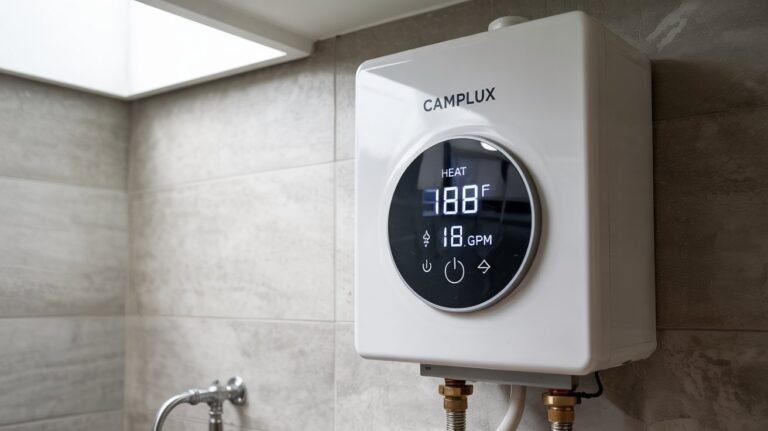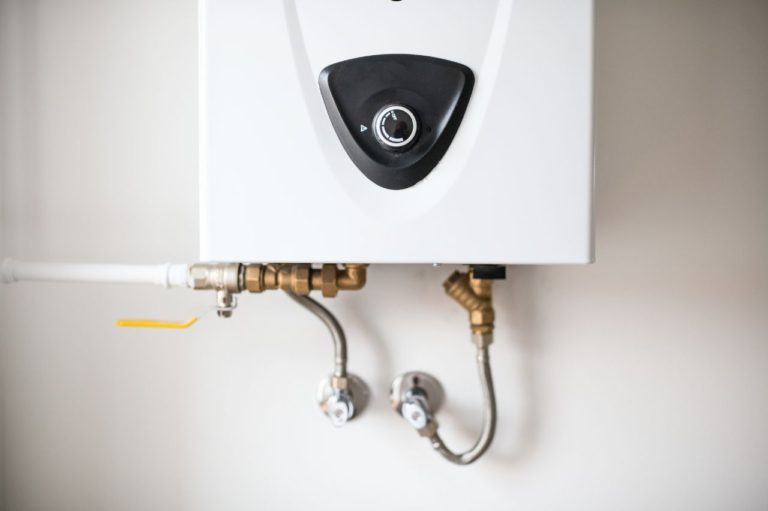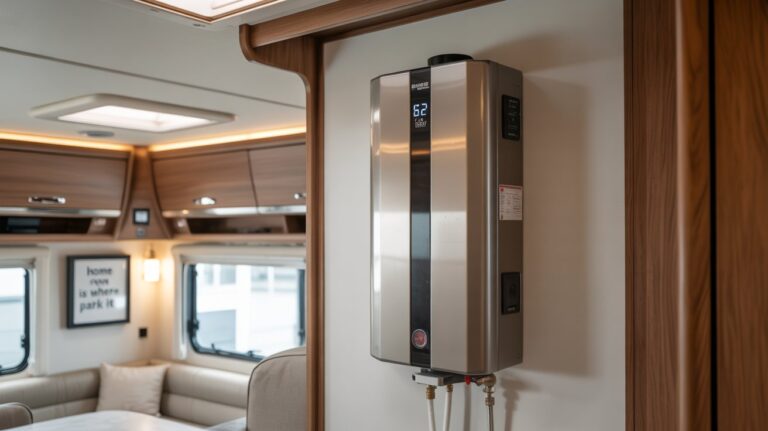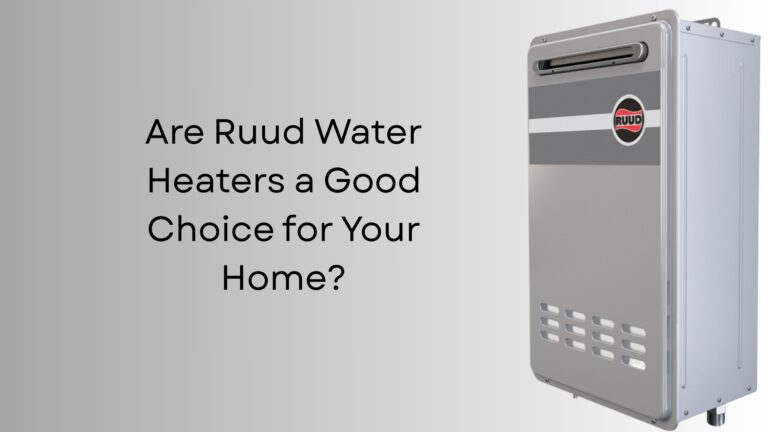What Are the Disadvantages of Solar Water Heating?
Solar water heating systems are an attractive alternative to traditional water heaters, offering a way to harness free, renewable solar energy. As homeowners look for ways to reduce their environmental footprint and energy bills, solar water heating becomes an increasingly popular choice.
However, like any other technology, solar water heating systems come with their own set of challenges. Understanding these limitations is crucial for making an informed decision about whether solar water heating is right for you.
Key Takeaways
- Solar water heating systems have several limitations that need to be considered.
- The effectiveness of solar water heating depends on various factors, including climate and installation quality.
- While solar water heating offers environmental benefits, it may not be suitable for all households.
- The initial investment for solar water heating systems can be substantial.
- Maintenance requirements for solar water heating systems are an important consideration.
Understanding Solar Water Heating Systems
Understanding how solar water heating works is crucial for assessing its viability as a sustainable energy solution. Solar water heating systems utilize sunlight to heat water, offering a renewable energy alternative for households.
How Solar Water Heating Works
Solar water heating systems operate by circulating water or a heat transfer fluid through solar collectors, typically installed on rooftops. These collectors absorb sunlight, converting it into heat that is then transferred to the water.
The heated water is stored in a tank for later use, reducing the need for conventional water heating methods. This process not only saves energy but also decreases reliance on fossil fuels, contributing to a more sustainable environment.
Types of Solar Water Heating Systems
Solar water heating systems are broadly categorized into active and passive systems, each with distinct characteristics and applications.
Active Systems
Active solar water heating systems use pumps to circulate water or a heat transfer fluid through the collectors. These systems are further divided into:
- Direct circulation systems, which pump household water through the collectors.
- Indirect circulation systems, which pump a heat transfer fluid through the collectors, subsequently heating the household water.
Active systems offer greater control over the heating process and can be more efficient, especially in colder climates.
Passive Systems
Passive solar water heating systems, on the other hand, rely on natural circulation and gravity to distribute the heated water. These systems are simpler and less expensive than active systems but may be less efficient in certain conditions.
Passive systems include:
- Integral collector-storage systems, which combine the collector and storage tank into a single unit.
- Thermosiphon systems, which circulate water through the collector and into a storage tank based on temperature differences.
While passive systems are generally less complex and require less maintenance, they may not be as effective in colder climates or during periods of low sunlight.
Understanding the limitations of solar water heating and the drawbacks of solar water heating is essential for homeowners considering this technology. Factors such as climate, available roof space, and local building codes can significantly impact the feasibility and efficiency of solar water heating systems.
High Initial Investment Costs
The initial investment required for solar water heating systems can be substantial. While these systems offer long-term savings on energy bills, the upfront costs can be a barrier for many potential adopters.
Equipment and Installation Expenses
The cost of solar water heating systems includes both equipment and installation expenses. The equipment itself, including solar collectors and storage tanks, can be expensive. Additionally, installation costs, which involve hiring professional installers to ensure the system is set up correctly and safely, add to the overall expense.
For instance, the cost of solar collectors can vary widely depending on the type and quality. High-efficiency solar collectors, while more expensive upfront, can provide better long-term savings. Installation costs also vary based on factors like roof complexity and local labor rates.
Return on Investment Timeline
One of the critical factors to consider when evaluating the cost of solar water heating systems is the return on investment (ROI) timeline. While the initial costs are high, the long-term savings on energy bills can offset these expenses over time. Homeowners can expect to break even on their investment within 5 to 10 years, depending on factors like local energy prices and system efficiency.
For those considering alternatives, it’s worth exploring other energy-efficient options. For example, tankless water heaters can also offer significant energy savings.
Available Tax Incentives and Rebates
To help mitigate the high initial costs, various tax incentives and rebates are available for homeowners who install solar water heating systems. These incentives can significantly reduce the upfront expenses, making the systems more financially accessible.
| Incentive Type | Description | Potential Savings |
|---|---|---|
| Federal Tax Credits | Credits against federal income tax liability | Up to 30% of total system cost |
| State and Local Rebates | Rebates offered by state and local governments | Varies by location |
| Utility Company Incentives | Incentives offered by utility companies | Varies by utility provider |
By taking advantage of these incentives, homeowners can reduce the financial burden of installing a solar water heating system, making it a more viable option for those looking to reduce their energy bills and environmental impact.
Weather Dependency and Reliability Issues
The efficiency of solar water heating systems is heavily influenced by weather conditions, raising concerns about their reliability. As these systems depend on sunlight to heat water, their performance can be affected by various weather-related factors.
Performance During Cloudy Days
One of the significant limitations of solar water heating systems is their reduced performance during cloudy days. Cloud cover can significantly reduce the amount of solar radiation that reaches the solar collectors, leading to a decrease in the system’s ability to heat water. For instance, on heavily overcast days, the system’s efficiency can drop by as much as 50% or more, depending on the technology and the density of the cloud cover.
To mitigate this issue, some systems are designed with backup heating elements or are paired with conventional water heating systems to ensure a consistent supply of hot water even on cloudy days.
Seasonal Efficiency Variations
Solar water heating systems also experience variations in efficiency across different seasons. During the winter months, the sun’s rays hit the Earth at an angle, reducing the intensity of the solar radiation that reaches the solar collectors. This results in lower system efficiency during winter compared to summer months when the sun’s rays are more direct.
| Season | Average Efficiency |
|---|---|
| Summer | 80-90% |
| Spring/Autumn | 60-70% |
| Winter | 30-40% |
Nighttime Performance Limitations
Solar water heating systems, by their nature, are inactive during the night since they rely on sunlight to operate. This means that they cannot generate hot water during nighttime hours, which can be a limitation, especially in households with high hot water demands during the evening.
“The inability of solar water heating systems to provide hot water at night is a significant drawback, necessitating the use of storage tanks to store heated water from daytime for later use.”
To address this, many solar water heating systems are equipped with storage tanks that store hot water generated during the day for use at night or during periods of low sunlight.
Space and Installation Requirements
Solar water heating systems have specific spatial and installation needs that must be met for optimal performance. One of the primary considerations is the roof space available for the installation of solar collectors.
Roof Space Considerations
Adequate roof space is crucial for the installation of solar collectors. The size and number of collectors needed depend on the household’s hot water requirements and the system’s design. It’s essential to assess the available roof space to ensure it can accommodate the required number of collectors without being overly shaded or obstructed.
Structural Requirements
The structural integrity of the roof is another critical factor. The roof must be strong enough to support the weight of the solar collectors and withstand various environmental conditions such as wind and snow. A structural assessment may be necessary to determine if any reinforcements are needed.
Orientation and Positioning Challenges
The orientation and positioning of solar collectors significantly impact their efficiency. Collectors should be oriented towards the sun to maximize exposure. However, achieving the optimal orientation and tilt can be challenging due to the roof’s design and surrounding obstructions. Professional installation is key to overcoming these challenges and ensuring the system operates at its best.
In conclusion, while solar water heating systems offer many benefits, their installation requires careful planning and execution. By understanding the space and installation requirements, homeowners can better appreciate the challenges associated with these systems and make informed decisions.
What Are the Disadvantages of Solar Water Heating in Different Climates?
Different climates present unique challenges for solar water heating systems, affecting their performance and reliability. Understanding these challenges is crucial for homeowners and businesses considering solar water heating as an alternative to traditional water heating methods.
Cold Climate Challenges
In cold climates, one of the primary concerns with solar water heating systems is the risk of freezing. When temperatures drop below freezing, the water inside the system’s pipes and collectors can freeze, potentially causing damage to the system.
Freezing Risks and Prevention
To mitigate freezing risks, many solar water heating systems used in cold climates employ antifreeze solutions or drainback systems. Antifreeze solutions involve circulating a non-toxic antifreeze through the collectors, while drainback systems drain the water from the collectors when the temperature drops, preventing freezing. According to experts, these systems can be effective, but they also add complexity and cost. For more detailed information on solar water heating systems, you can visit EnergySage.
Hot Climate Limitations
In hot climates, solar water heating systems can face different challenges, primarily related to overheating. When the system produces more hot water than needed, it can lead to increased pressure within the system, potentially causing damage or reducing the system’s lifespan.
To manage overheating, systems in hot climates often incorporate temperature and pressure relief valves and may use stagnation protection techniques. Stagnation protection involves designing the system to withstand or mitigate the effects of overheating when not in use.
Humid Environment Concerns
In humid environments, solar water heating systems can be susceptible to corrosion and the growth of algae or bacteria within the system. To combat these issues, components are often made from corrosion-resistant materials, and the system design may include features to minimize standing water, reducing the risk of biological growth.
By understanding the specific challenges associated with different climates, individuals can better assess the suitability of solar water heating for their needs and take steps to mitigate potential disadvantages.
Maintenance and Longevity Concerns
To maximize the benefits of solar water heating, it’s essential to consider both its maintenance requirements and how long it will last. Solar water heating systems are designed to be durable, but like any other technology, they require regular maintenance to ensure they operate efficiently and effectively over their lifespan.
Regular Maintenance Needs
Regular maintenance is crucial for the optimal performance of solar water heating systems. This includes checking for leaks, inspecting the condition of the solar collectors, and ensuring that the system’s controls are functioning correctly. Annual inspections can help identify potential issues before they become major problems, potentially saving homeowners from costly repairs down the line.
Moreover, the fluid that circulates through the solar collectors may need to be periodically drained and replaced to maintain its effectiveness in transferring heat. This is particularly important in systems that use glycol to prevent freezing.
System Lifespan and Degradation
The lifespan of a solar water heating system can vary, typically lasting between 15 to 25 years, depending on the quality of the system and how well it is maintained. Over time, components can degrade, affecting the system’s efficiency. For instance, the solar collectors can become less effective due to weathering, and the insulation around the storage tank can deteriorate.
Understanding the potential for degradation and planning for it can help homeowners manage their expectations and make informed decisions about when to replace or upgrade their system.
Finding Qualified Repair Technicians
One of the challenges with maintaining a solar water heating system is finding technicians who are qualified to perform repairs. Since solar water heating is a specialized field, not all HVAC technicians are familiar with these systems. Homeowners may need to seek out certified solar thermal technicians who have the necessary training and experience.
To address this issue, some manufacturers offer training programs for technicians, and there are professional certifications available for those who work on solar water heating systems. Homeowners can also check with local solar energy associations for recommendations on qualified technicians in their area.
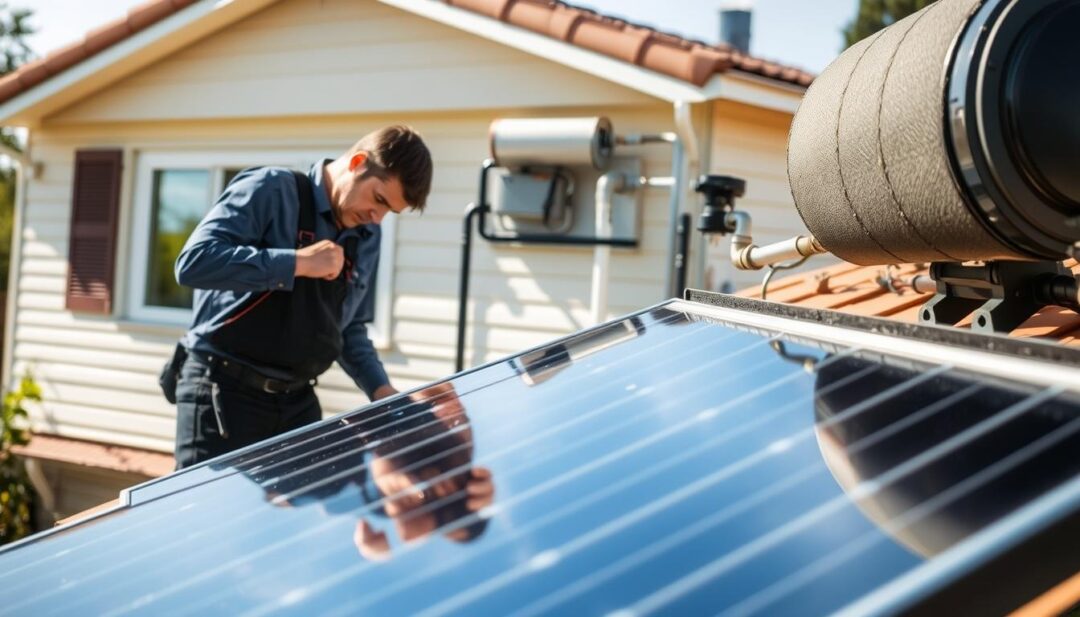
Aesthetic Impact and Property Considerations
One of the often-overlooked aspects of solar water heating is its impact on the visual appeal of a property. As homeowners and builders consider the benefits of renewable energy, they must also think about how these systems will integrate with the existing architecture.
Visual Impact on Buildings
The installation of solar water heating systems can significantly alter the appearance of a building. The collectors and tanks can be bulky and may not always be aesthetically pleasing. However, modern designs have made significant strides in improving the visual appeal of these systems. For instance, some solar collectors are designed to be sleek and low-profile, minimizing their visual impact.
It’s essential to consider the color and style of the solar collectors and how they will match or contrast with the existing roof or building facade. In some cases, homeowners may choose to install collectors that are designed to blend in with their roofing material, reducing the visual impact.
Property Value Effects
The impact of solar water heating systems on property value is a complex issue. On one hand, these systems can increase a property’s value by offering potential buyers the benefit of reduced energy costs. According to a study, homes equipped with solar water heating systems can command a higher selling price. On the other hand, the visual impact of these systems can be a deterrent for some potential buyers who may not find them aesthetically pleasing.
For more insights on the pros and cons of solar hot water systems, you can visit Metropolitan Hot Water’s blog, which provides a comprehensive overview of the advantages and disadvantages.
HOA and Building Code Restrictions
Homeowners considering solar water heating must also comply with any HOA rules or local building codes. These regulations can dictate the type of solar collectors that can be used, their placement on the property, and even whether solar water heating systems are allowed at all. It’s crucial for homeowners to review these regulations before installing a solar water heating system to avoid any potential fines or required modifications.
In conclusion, while solar water heating systems offer numerous benefits, their aesthetic impact and compliance with property regulations are critical considerations. Homeowners must weigh these factors carefully to ensure that their decision to install a solar water heating system is both environmentally friendly and compliant with local regulations.
Comparing Solar Water Heating to Alternatives
As homeowners explore sustainable solutions, comparing solar water heating to traditional water heaters and solar PV with electric water heating becomes crucial. This comparison will help determine which system is most efficient, cost-effective, and environmentally friendly for specific needs.
Solar Water Heating vs. Traditional Water Heaters
Traditional water heaters, which rely on electricity or gas, have been the standard for decades. However, they can be costly to operate and have a significant environmental impact. Solar water heating systems, on the other hand, utilize renewable energy from the sun, potentially reducing utility bills and carbon footprint.
One of the main drawbacks of solar water heating is its dependency on weather conditions. On cloudy days or during winter months, the system’s efficiency can be compromised. In contrast, traditional water heaters provide consistent performance regardless of the weather. However, their ongoing energy costs can be a significant drawback.
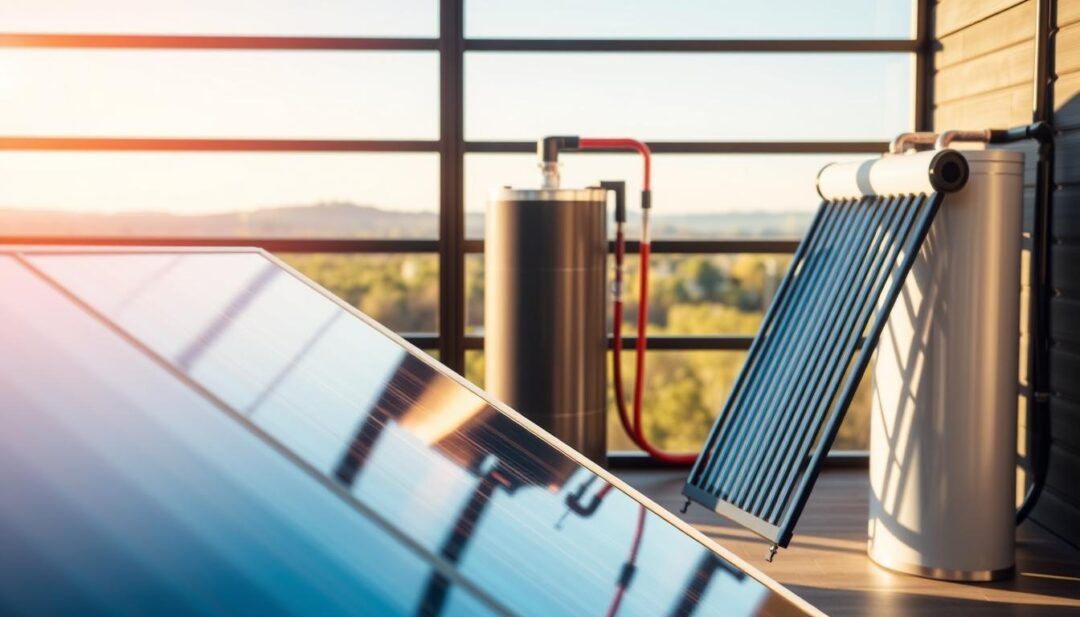
Solar Water Heating vs. Solar PV with Electric Water Heating
Solar PV systems with electric water heating represent another alternative. These systems generate electricity from sunlight, which can then be used to heat water. This approach offers flexibility, as the electricity can also power other household needs.
When comparing solar water heating to solar PV with electric water heating, several factors come into play. Solar water heating is specifically designed for water heating, making it highly efficient for this purpose. Solar PV systems, while versatile, may not be as efficient for water heating alone, depending on the system’s size and the household’s energy needs.
The choice between these alternatives depends on various factors, including the homeowner’s budget, energy requirements, and environmental goals. Understanding the limitations of solar water heating and the characteristics of other systems is essential for making an informed decision.
Conclusion: Is Solar Water Heating Worth It Despite the Drawbacks?
Solar water heating presents several challenges, including high initial investment costs, weather dependency, and space requirements. Despite these disadvantages of solar water heating, the system offers significant benefits, such as environmental advantages and potential cost savings. The cons of solar water heating are notable, but they are counterbalanced by the long-term savings and the reduction in carbon footprint.
When evaluating the challenges of solar water heating, it’s essential to consider the overall energy strategy and how solar water heating fits into it. For many homeowners, the benefits outweigh the drawbacks, especially in regions with ample sunlight. By understanding the potential drawbacks and benefits, individuals can make informed decisions about whether solar water heating is a viable option for their needs.
Ultimately, solar water heating can be a worthwhile investment for those who are willing to navigate its challenges. With the right installation, maintenance, and expectations, solar water heating systems can provide reliable and renewable energy for years to come.



